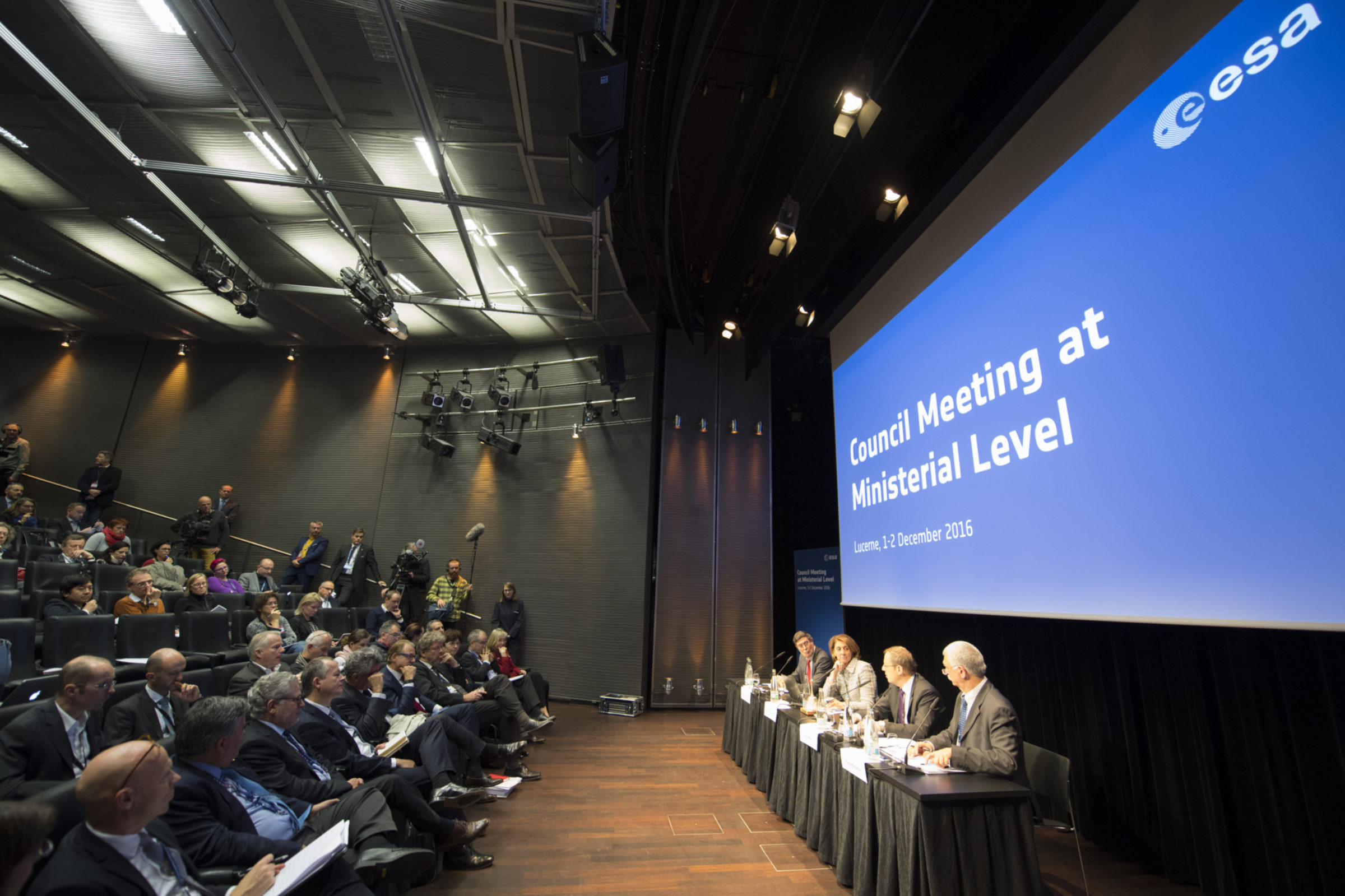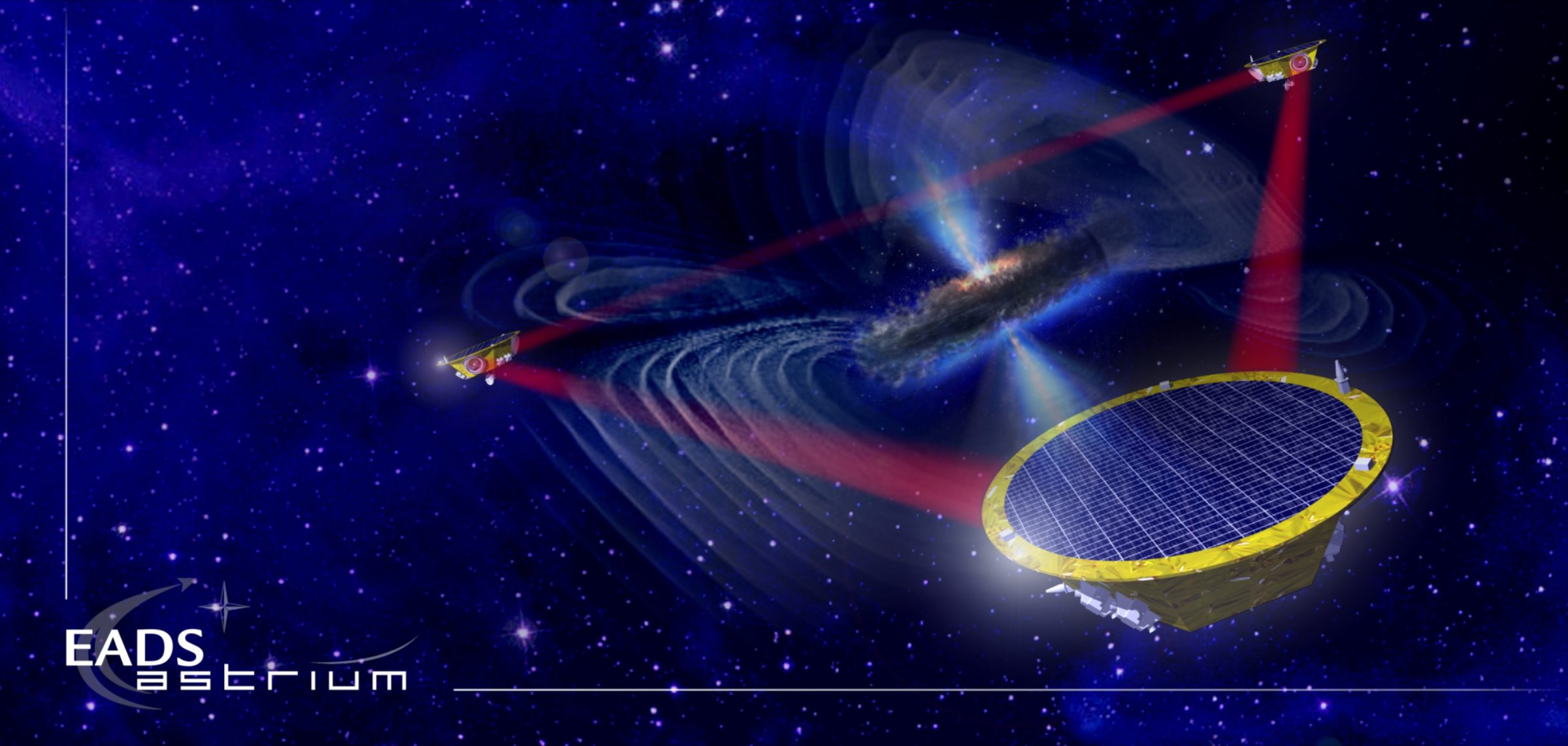Ruth McAvinia • Dec 07, 2016
European Space Agency Announces Budgetary Commitments
The decisions have been made at another European Space Agency council meeting at ministerial level, but their impacts will probably only be clear towards the end of the budgeting period. The top line figure of 10.3 billion euro for the agency’s activities was reported to be close to what it had requested from its member states – some 11 billion euro.

“This is a big amount of money for the future,” said Director General Jan Wӧrner speaking at a news conference to mark the end of the meeting on Friday, “It allows us to really go forward and covers all the different areas.”
But he was forced to concede that only “a crystal ball” could tell whether a 1% increase in science budget will be enough to stay ahead of inflation.
“If the purchasing power index is higher than 1% then we are for the next years in a little bit of a difficult situation, this is right,” he said. “If, as I hope is the case, the inflation is really very very low, then we can have already a modest increase during that time. The real numbers - we will have to see what inflation will do. We will work with what we are now getting from the Member States, we will do the best out of it and I am confident we can.”
For now, the increase is already earmarked for ExoMars as it requires additional funding to ensure the launch of its second phase in 2020, carrying a rover to the martian surface. The confirmation of continuing financial support for the mission was expected, but it required finding an extra 440 million euro for a project that has slipped from an original 2018 launch date and exceeded its original budget.
“For us, a further delay is no option,” said Wӧrner. “We have the TGO [Trace Gas Orbiter that reached Mars on October], an orbiter at Mars, we know also that the relay function is working as well. We are confident that the money and the schedule is mature.”
Alvaro Giménez Cañete, Director of Science, added “With the approval of the level of resources in particular for the science programme, we can do what we are committed to and we can launch the missions we planned to launch in the period from now to 2021 – that five year period.”
But he confirmed that if the 1% increase turns out to be a cut in real terms, it will have an impact and may require some cutting of costs.
“It has an effect for new commitments, missions that were not thought to be launched in the period but that we have to start. If we have to delay some starts or have some discussions about efficiencies applied to parts of the science programme where we can still improve, we have that challenge and we will go into that in discussion with all our Member States.”
Among these future missions is the L3 launch slot under the Cosmic Vision programme. The mission call was released this fall ahead of schedule in the hope of having a gravitational wave detector launched in 2029 – five years before the slot originally envisaged by the programme. The mission gained new impetus following the announcement of the direct detection of gravitational waves by the LIGO-Virgo consortium on the ground, and the successful demonstration of necessary technology by the LISA Pathfinder mission in space. A decrease in spending would likely impact its development, but this might be mitigated if NASA becomes involved. The US space agency left the LISA project five years ago, but this year indicated its intention of adding the L3 gravitational wave mission to its 2020 Decadal Survey.
The Asteroid Impact Mission will not be funded in its current form but Wӧrner said there was “a clear demand” for continuing study of the asteroid hazard, and money will be given to the General Studies Programme to work on ideas for long-term planetary defence.
Meanwhile, ESA will continue to fund International Space Station activities through 2024, and continue with navigation and Earth observation activities, the latter potentially more important following suggestions that NASA’s Earth observation budget will be cut once President-Elect Trump arrives in the White House.
The tone of the news conference became somewhat contentious as one journalist after another appealed for greater transparency in ESA’s sharing of information. Jan Wӧrner has made transparency one of the key metrics in his performance as Director General, but defended the point that some sensitive discussions needed to be conducted behind closed doors, and that all decisions would be made public. You can read the full resolutions here, although the language and structure are those of a legal agreement.
The next ESA Council at ministerial level has been scheduled for late 2019. With elections imminent in France and Germany as well as the negotiations for the United Kingdom to leave the European Union expected to begin in March 2017, it would be a brave person who would predict what ministers and under what circumstances will meet then.
Support our core enterprises
Your support powers our mission to explore worlds, find life, and defend Earth. You make all the difference when you make a gift. Give today!
Donate

 Explore Worlds
Explore Worlds Find Life
Find Life Defend Earth
Defend Earth



